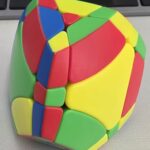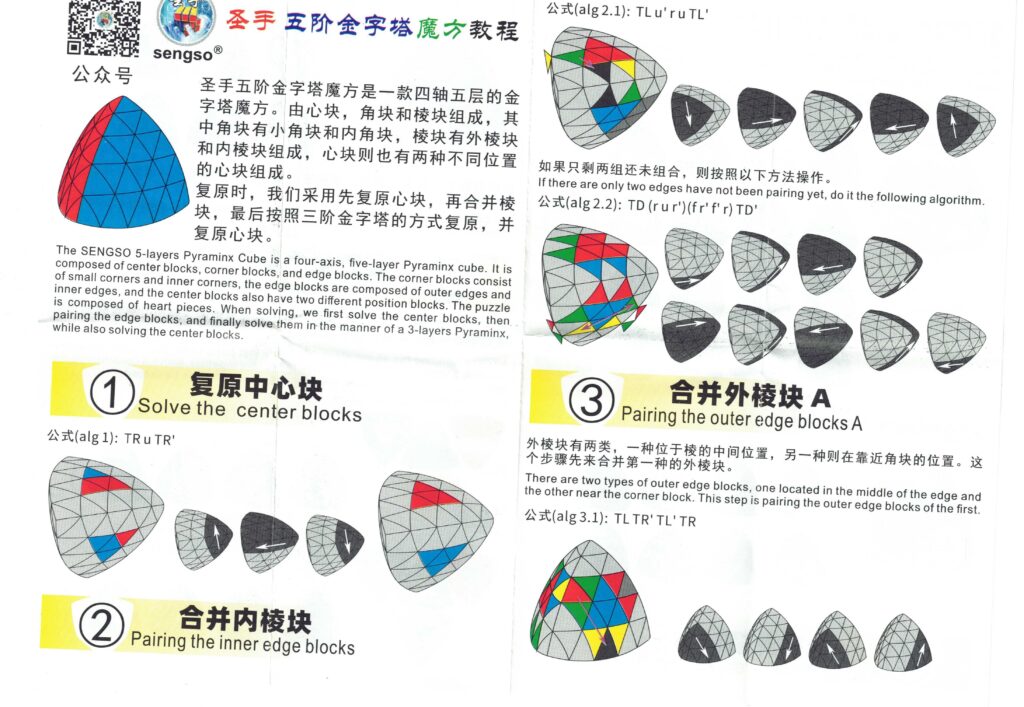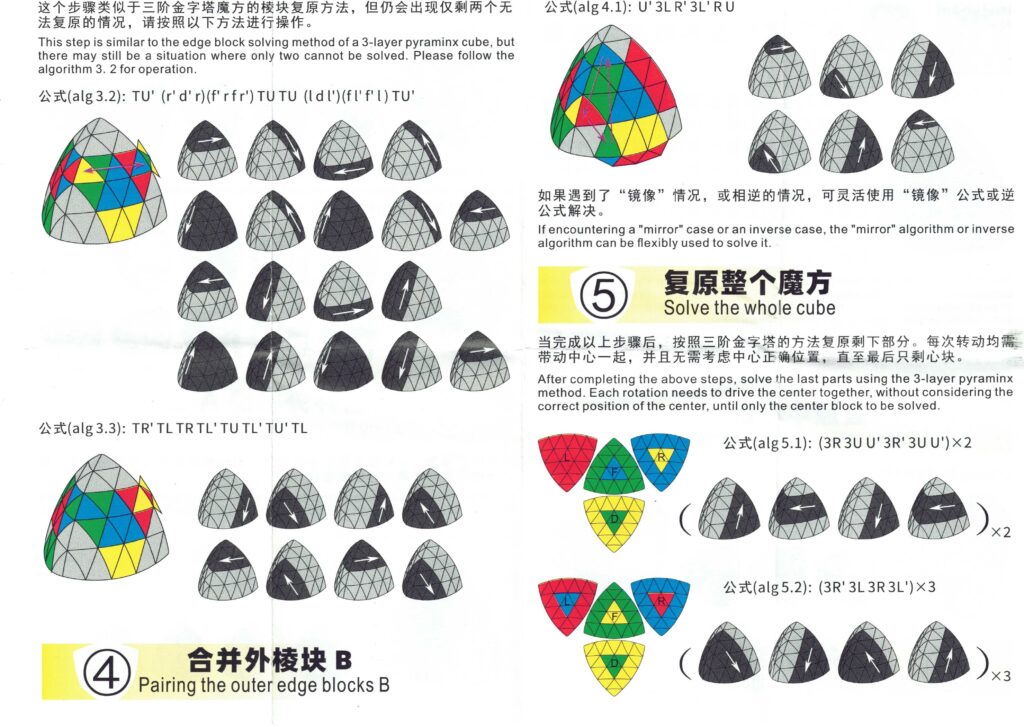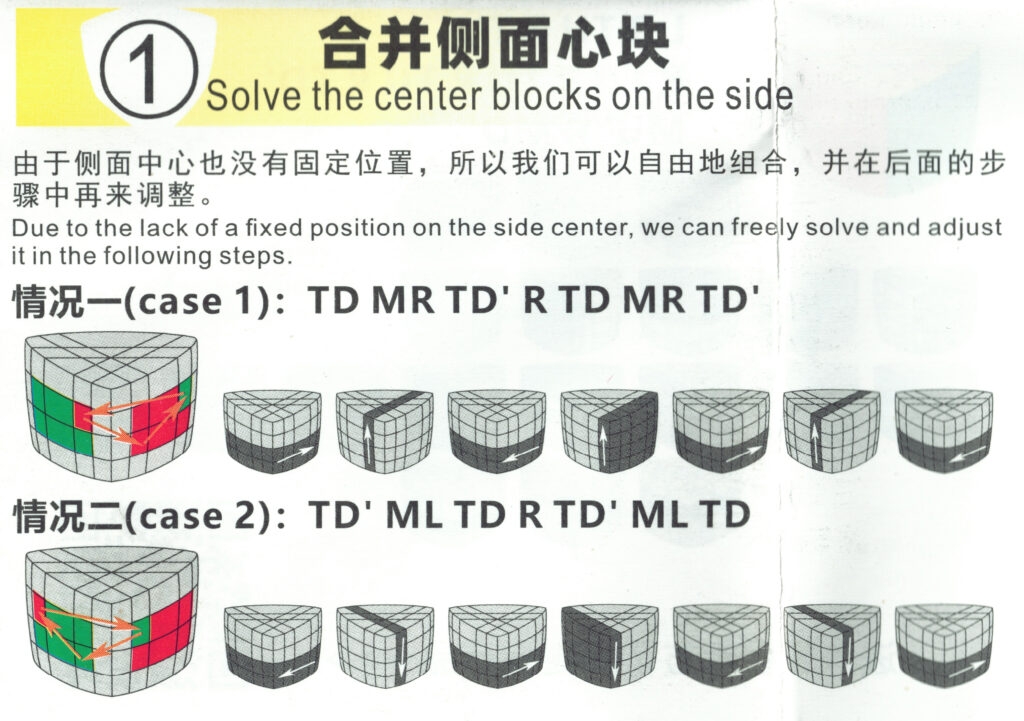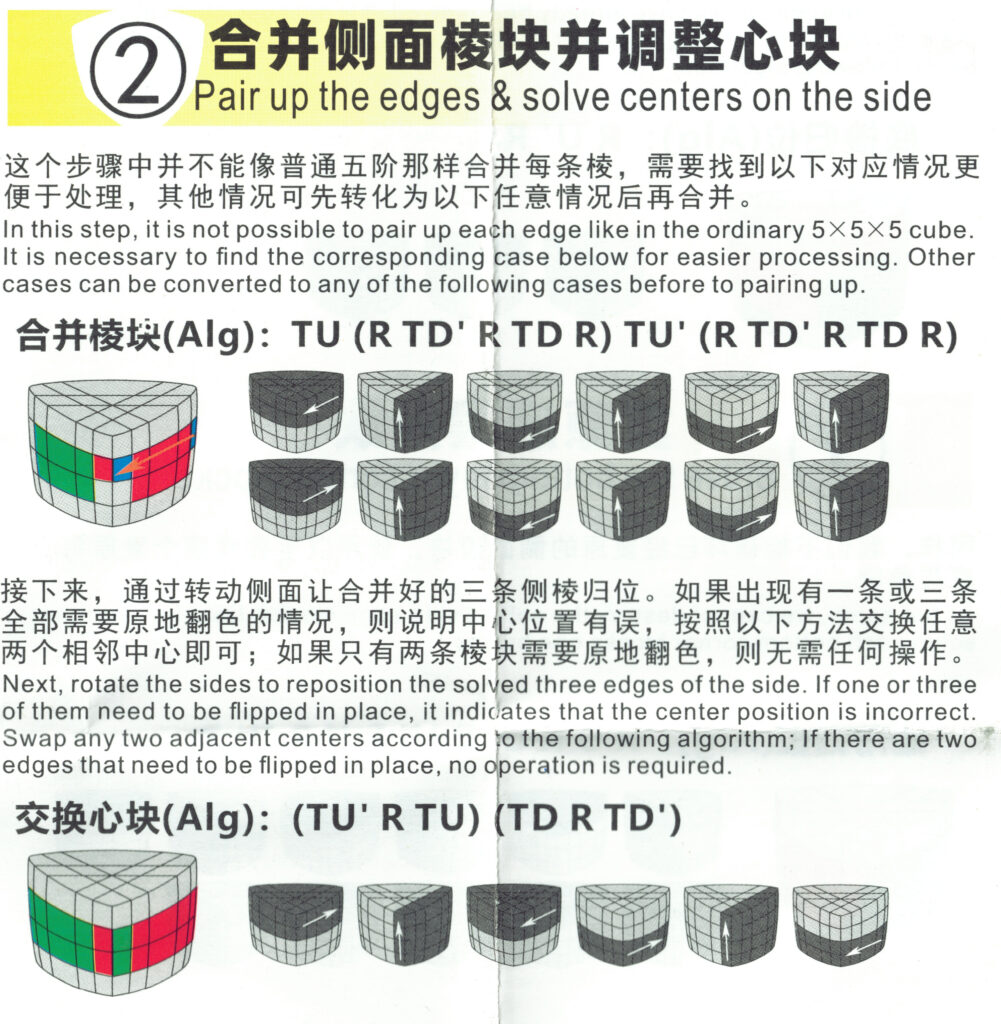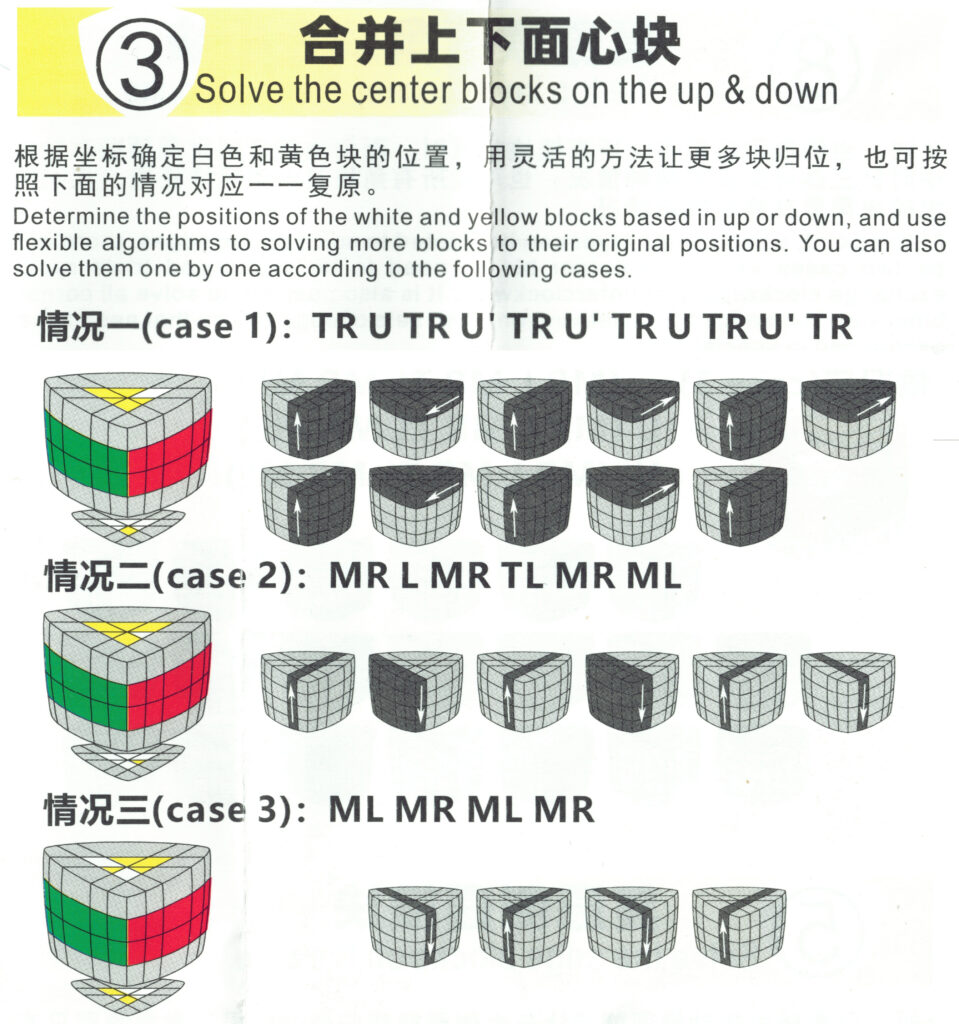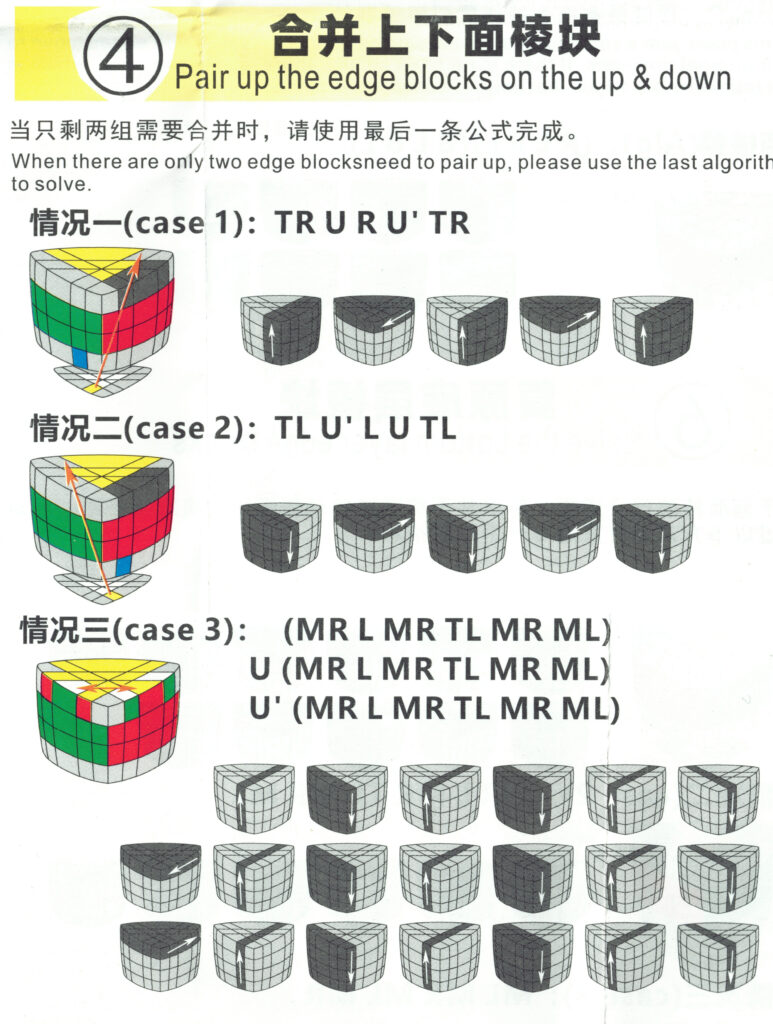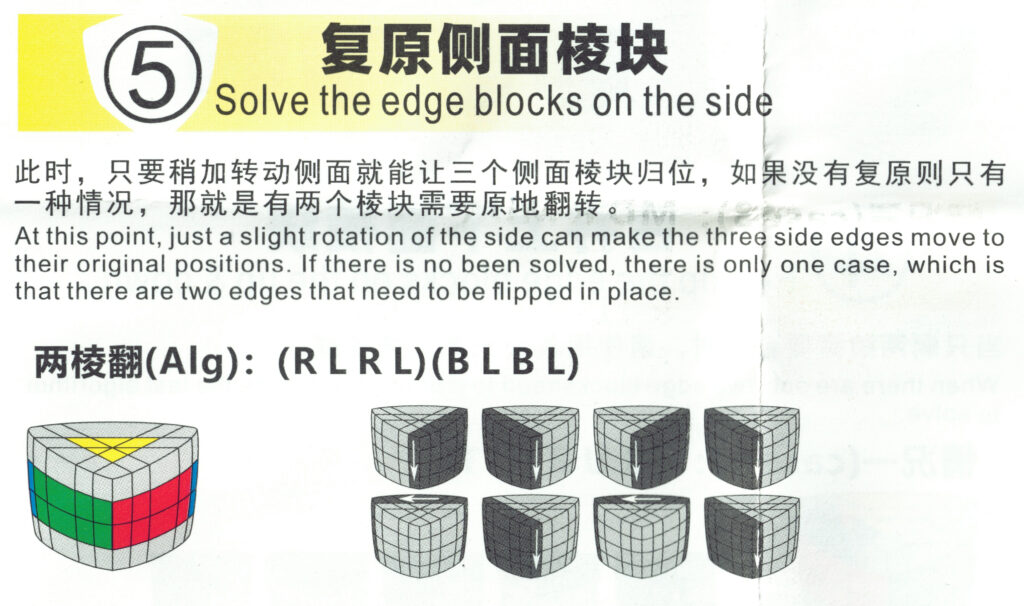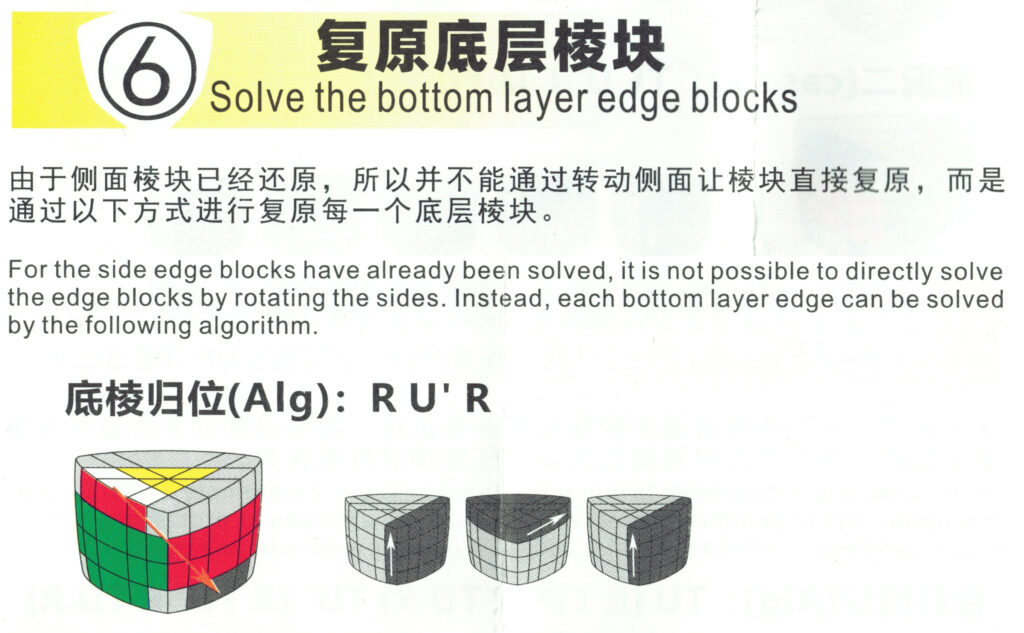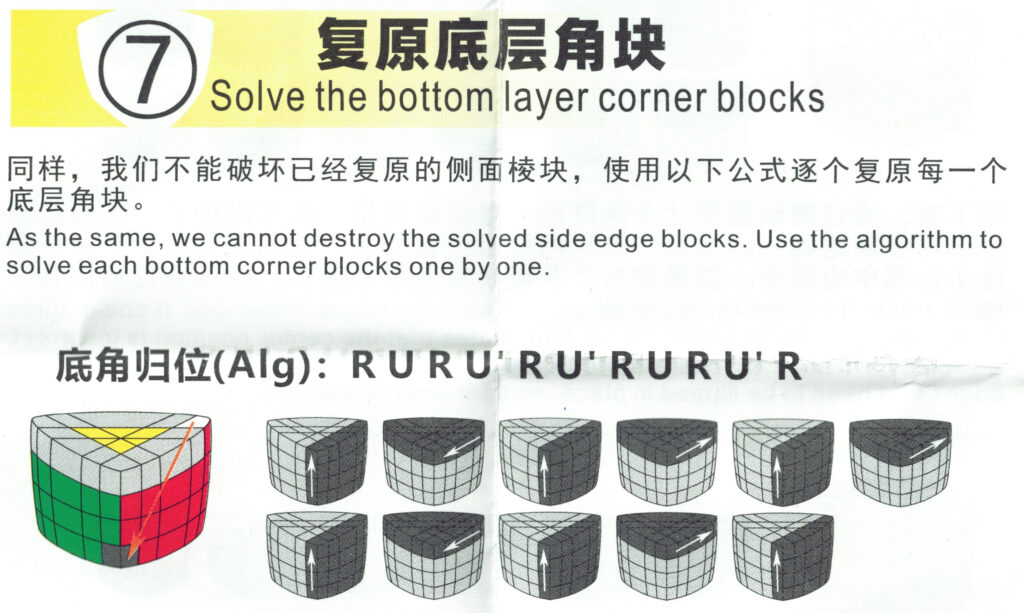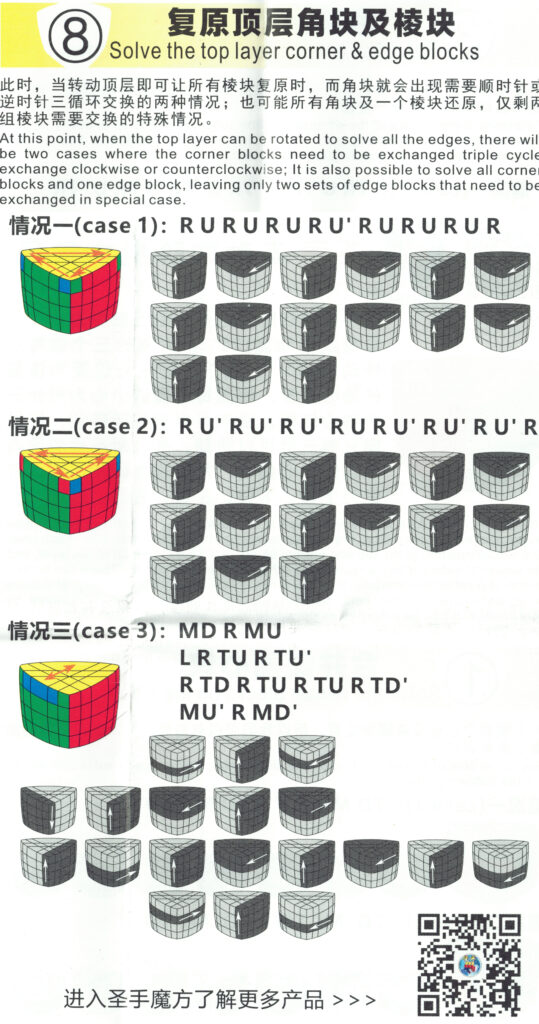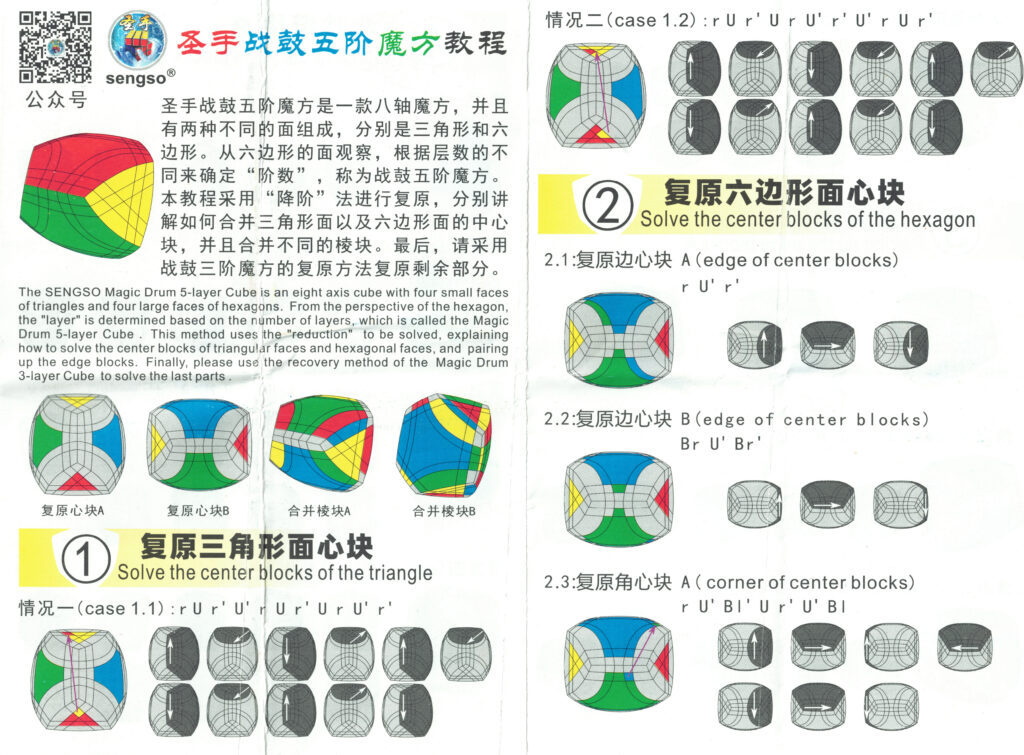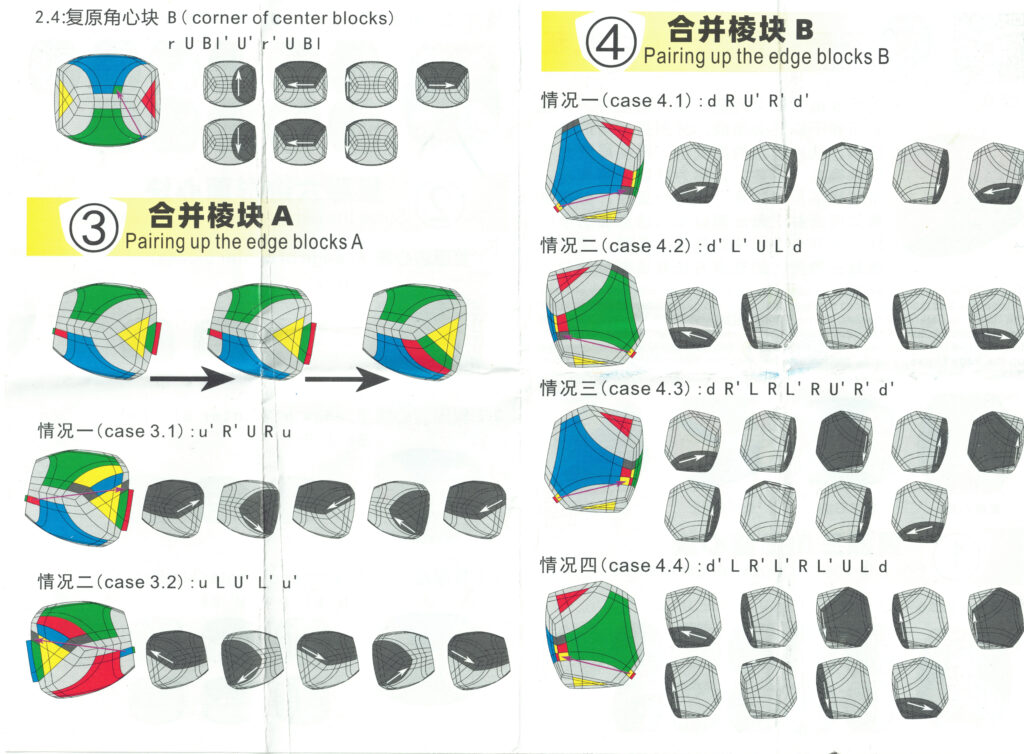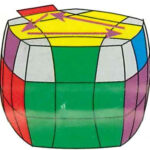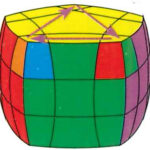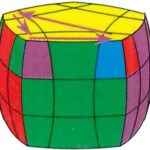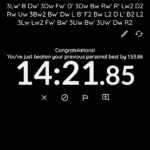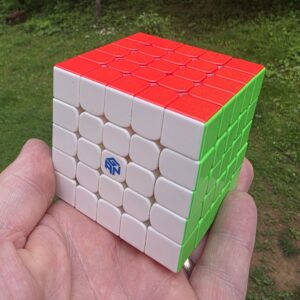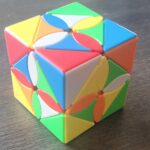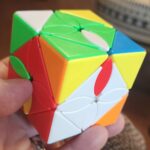I quite enjoyed the 5×5 Pyraminx so I thought the 6×6 might be fun. I wasn’t prepared for it to be such a different, unique solve. I’m going to try to break down how I did it, having bastardized some other suggestions. Still WIP.
Step One: Solve Centers
This can be a bit of a challenge for me. Getting two centers is fine, it’s those last two. Important to note: Make sure centers are proper. My first solve had swapped centers, so I couldn’t solve without breaking it all.
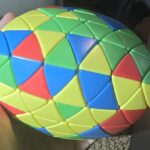 If you get one center edge swapped, here’s what you do. In this image it’s yellow and green. In this position, you could just bring the top yellow down to the green, but you don’t want to do that just yet. Move the front face with the yellow center clockwise or ccw so the wayward green piece is out of the way. We’re going to do a pair of D/D/U/U algs. In this pic, the yellow on the top face is on the left side, you’ll start on the left. Do a D/D/U/U moving the yellow down to a dummy/properly-placed front-faced yellow piece. Then move the front face back so the incorrect green piece is on the top (where it’s shown in the pic). Do the D/D/U/U again, but now start on the right. This will reverse the swap and you’re golden!
If you get one center edge swapped, here’s what you do. In this image it’s yellow and green. In this position, you could just bring the top yellow down to the green, but you don’t want to do that just yet. Move the front face with the yellow center clockwise or ccw so the wayward green piece is out of the way. We’re going to do a pair of D/D/U/U algs. In this pic, the yellow on the top face is on the left side, you’ll start on the left. Do a D/D/U/U moving the yellow down to a dummy/properly-placed front-faced yellow piece. Then move the front face back so the incorrect green piece is on the top (where it’s shown in the pic). Do the D/D/U/U again, but now start on the right. This will reverse the swap and you’re golden!
Step Two: Get Three Edges
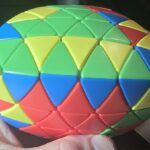 For this, you’ll be matching these three red/yellow edges here.
For this, you’ll be matching these three red/yellow edges here.
Find your piece, position it on the right or left and bring three layers down to put it adjacent to the center edge. Next, move your entire top layer away from the tip you just turned. If you’re matching on the right, then move top layer left and out of the way (and vice versa). This is like a 4×4 edge-match, where you’ll replace it with another mismatched edge. You’ll eventually have to figure out what to do if you have only two edges left, but that’s for a different day. Keep matching these until you get them all sorted out. You could always do two at once, if you’re smart. 2025 me? Not so great. Oh, here’s a link to a video if you need.
Step Three: Get Inner Edges
There are four green/blue pieces shown in the pic above, but we’re talking about the inner pair. The outer pair can be matched by turning the tips after this step. Easy.
For the inner pair, this is a simple D/D/U/U algorithm, as these are not deeper cuts. Just do it properly to retain the center tips. It’s pretty simple.
Step Four: Final Edges
This is going to be the outer green/blue pieces shown above. This is just a wide D/D/U/U matching. Same as before.
Step Five: Pyraminx Time
Though this is reduced to a Jing’s Pyraminx, it’s just really regular Pyraminx algs. If you need to swap four centers, give it a D/D/U/U cycle three times.
If you have parity, I struggle here. For this section, use Super Antonio Vivaldi’s guide, linked by timestamp.
